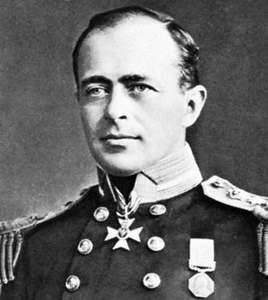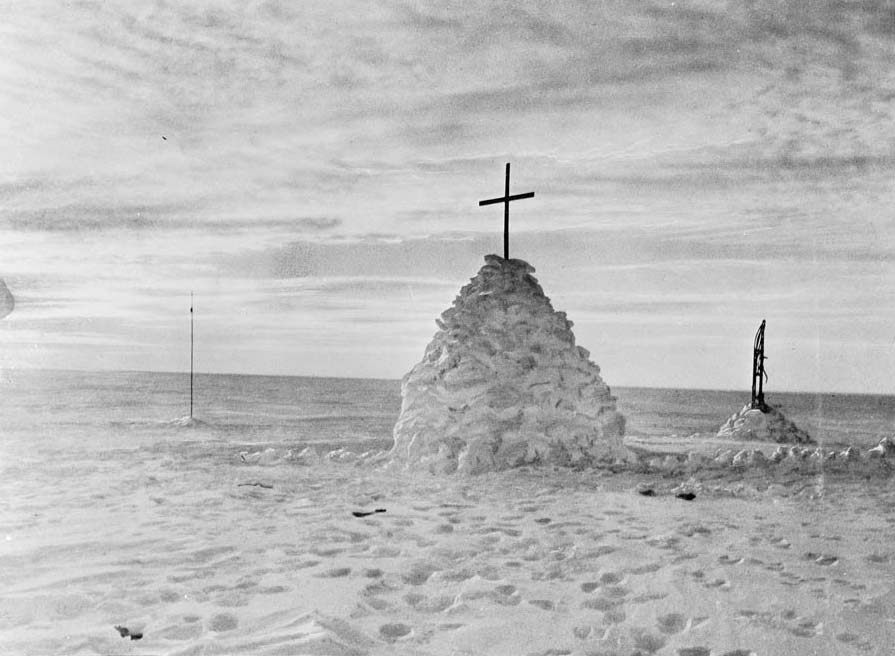The most famous Antarctic explorer

Robert Falcon Scott. What a great name for an adventurer. He led the Discovery expedition to Antarctica in 1901-04 receiving much acclaim when he returned to England. The Discovery expedition was the first British government funded expedition to Antarctica and it made important discoveries for science and about Antarctica, reaching the furthest point south at that time. It also launched the polar careers of Scott and Shackleton and led to fame for Scott (Shackleton was sent home on a relief ship, suffering from scurvy, but returned with his own expeditions later).
He would travel once again to the Antarctic continent in 1910 in the quest to be the first to reach the South Pole in the Terra Nova expedition (1910 -1913)
On reaching Antarctica they built a pre-fabricated hut (Scott’s Hut) at Cape Evans, which still stands today, and carried out scientific and exploratory trips across the ice, laid depots for the attempt to the Pole, then overwintered before tackling the trip to the Pole in the spring.
The group started out in October with motorized sleds, ponies and dogs. However, the sleds soon broke down and the ponies were not the best choice for Antarctic conditions. Unlike Amundsen, who used sledge dogs, Scott preferred to man-haul the sledges, but manhauling in Antarctic conditions requires huge amounts of calories.
In December, the dog teams turned back, leaving only Scott and four companions trekking on foot. On Jan. 17, 1912, after a journey of 930 miles the men reached the South Pole, only to find that Roald Amundsen’s Norwegian expedition had beaten them by just over a month.
You can imagine how disheartening this must have been after three months of back-breaking trekking in terrible conditions. Scott and his men started the long journey back to the coast, and made good time for three weeks, but then Edgar Evans, who had been suffering from frostbite and a head and hand injury died, most likely from concussion, scurvy and fatigue.
Then, sometime later, Oates, realising that his frostbitten feet were slowing down the party, left the shelter of their tent and walked into a blizzard, sacrificing himself. He delivered his immortal line, recorded in Scott’s diary ‘I am just going outside and may be some time’.
Scott and the remaining two companions (Wilson and Bowers) died from starvation and exposure on March 29, 1912. According to Scott’s logbook, discovered by a later search party, they died, tragically just 11 miles from a prearranged supply depot. On November 12th with the return of daylight and better travelling conditions, Scott’s men formed a search party and Scott and his companions were found in their tent. His team took their diaries and letters, collapsed the tent and buried it in a mound of snow. Their bodies are still out there buried under a century of snow and ice and gradually moving with the glacier towards the ocean.

Scott became a legendary British hero and his death overshadowed Amundsen’s achievement. Later writers tried to take the shine off Scott’s memory by claiming he was disorganised and foolhardy, though other writers came to his defence.
In an interesting twist recent suggestions have been made that Scott’s party was ‘sabotaged’ by Lieutenant Edward “Teddy” Evans, Scott’s second in command. Firstly, there are claims that he took more food than he should have from the expedition’s caches, leaving Scott’s party short, and secondly, he may have failed to deliver some of Scott’s final orders regarding using the sled dogs to retrieve the Polar party. I doubt it. Evans admired Scott greatly and was a very capable officer.
Even a century later we are still discussing it but whatever the truth may be, they were all brave men and deserve respect.

